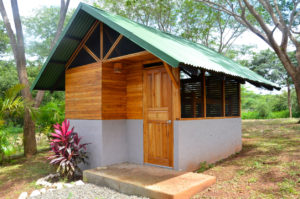 One means of maximizing the earning potential of single-family rental home investors is to add units, specifically tiny homes, to an existing property. The tiny house movement, which began with people wanting a simpler and more meaningful life by downsizing their living space and reducing their “stuff”, has grown into a legitimate investment opportunity. But just because it’s increasing in popularity, it doesn’t make a tiny home a good bet for all investors. Depending on the circumstance, it may not even be legal. So, don’t make the decision to add a tiny home in Trussville yet. Not before you do your research and learn all about it. Look for both the potential problems and potential opportunities.
One means of maximizing the earning potential of single-family rental home investors is to add units, specifically tiny homes, to an existing property. The tiny house movement, which began with people wanting a simpler and more meaningful life by downsizing their living space and reducing their “stuff”, has grown into a legitimate investment opportunity. But just because it’s increasing in popularity, it doesn’t make a tiny home a good bet for all investors. Depending on the circumstance, it may not even be legal. So, don’t make the decision to add a tiny home in Trussville yet. Not before you do your research and learn all about it. Look for both the potential problems and potential opportunities.
There isn’t any doubt that improvements made to your property that increase both its value and rental income are really worth looking at. And, when you first look at it, it really seems like building a tiny home on your rental property is a great way to realize both benefits. So, what specifically is considered a tiny home in this case? It’s generally accepted that a tiny home is a detached dwelling that is under 400 square feet. They can be on wheels, similar to an RV, or built on a permanent foundation.
There are a lot of people looking for affordable rental homes. This has been mainly spurred by the high housing prices across the country. When you consider this together with the growing interest in a downsized lifestyle, which means fewer possessions and a smaller environmental impact, it’s obvious why tiny rental homes are one housing trend that renters in many markets may welcome. When you add a tiny home next to an existing rental house, you are offering investors the opportunity to increase their rental income without the costs of buying another property. And in a lot of cases, adding structures to the property will increase the property’s appeal to renters needing multiple units as well as add to the property’s overall value.
There are some things you need to look at before building a tiny home on your rental property, however. The consideration you should look at first is cost. The structure may be really tiny but tiny homes still cost anywhere from $30,000 to $180,000. This indicates that no matter how economical or inexpensive a tiny home can be, it will still be a large financial investment. With this likely obstacle in your way, the reality is that looking for financing for a tiny home may be a tedious task. Many lenders do not offer mortgages for tiny homes, and other types of loans may force you to settle for a higher interest rate.
Going further than the cost of building a tiny home, you would need to take the local zoning regulations and building codes into consideration. In a lot of cities across America, there are strict zoning laws that prevent property owners from adding rental units to a single-family property. There are cities with regulations that instruct you on how big a detached dwelling should be in order for it to be legally occupied.
Local governments can also be very strict about building codes. Many require that all dwellings be built on foundations and that likewise, tiny homes meet the same requirements as any other house. There can be permits, inspections, and utility service work required, adding to the cost of construction. Therefore, doing thorough research on city ordinances and building codes in your area is an absolute necessity.
It is even vital to take into account how your tenants will feel about a tiny home. If it follows that you have long-term tenants in your rental home, they may neither take pleasure having a second dwelling on the property nor eagerly look forward to it. Adding another unit adds people, cars, and increased activity around the home. It may also cause disputes or other arguments. Although such feedback is not guaranteed, you must try to understand your current tenant’s needs when making your decision.
In the end, while a tiny home could possibly add some worth to an investment property, they mostly don’t appreciate in the same manner that more traditional houses do. This is especially the case for tiny homes on wheels. Instead of appreciating in value, these homes are counted as depreciating assets and won’t grow in value like the land and other structures likely will. Tiny homes built on foundations tend to fare better on resale value but may still lag behind traditional homes.
All these reasons show us one thing— that adding a tiny home to your investment property can be quite challenging. When you equip yourself with knowledge beforehand, you’ll find that your future is bright with possibilities. Whether or not you choose to go forward with these kinds of plans, you can make use of the advice offered by a Trussville property manager. Give us a call at 205-793-0700 for more useful information.
We are pledged to the letter and spirit of U.S. policy for the achievement of equal housing opportunity throughout the Nation. See Equal Housing Opportunity Statement for more information.


